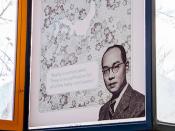SUMMARY SECTION ONE The purpose of the article is to convey a better understanding of what guides our actions in everyday life. The method used to support the arguments of the article is a 'phenomenological analysis': a technique which is purely descriptive and empirical(relying sole on experiment and observation). Different spheres of realities exist within everyday life. The transition from one reality to another creates a shock, as a result of the shift in attentiveness in the psyche. Of all existing realities, the 'reality of everyday life' reigns supreme. It empowers attentiveness and alertness in normal, conscious life. Everyday life is experienced in relation to space and time, although time assumes a more critical role. Intense interest is devoted to the 'zone of everyday life'. Found in this zone are immediate concerns that guide our daily routines. Reality is an inter-subjective experience. Each individual exits in his/her own private reality, yet co-exists in a normal shared common sense reality with society.
To momentarily escape the presence of reality in order to assume a different perspective requires a concentrated and deliberate effort. When foreign tasks are introduced into our daily routines, the reality of everyday life integrates the foreign information into what is more natural and understood. Other subconscious realities find themselves engulfed within the reality of everyday life as a result of its overpowering nature. We are successful in our endeavors only when a specific set of sequences are followed that emphasize the temporality of everyday life. Time keeps individuals oriented within the vast composition of everyday life.
SECTION TWO The most significant experience in everyday life is the 'face-to-face' situation, all other types of encounters are mere branches stemming from it. We create typification(putting elements into categories) that govern our conversations and attempt to establish patterns that...


